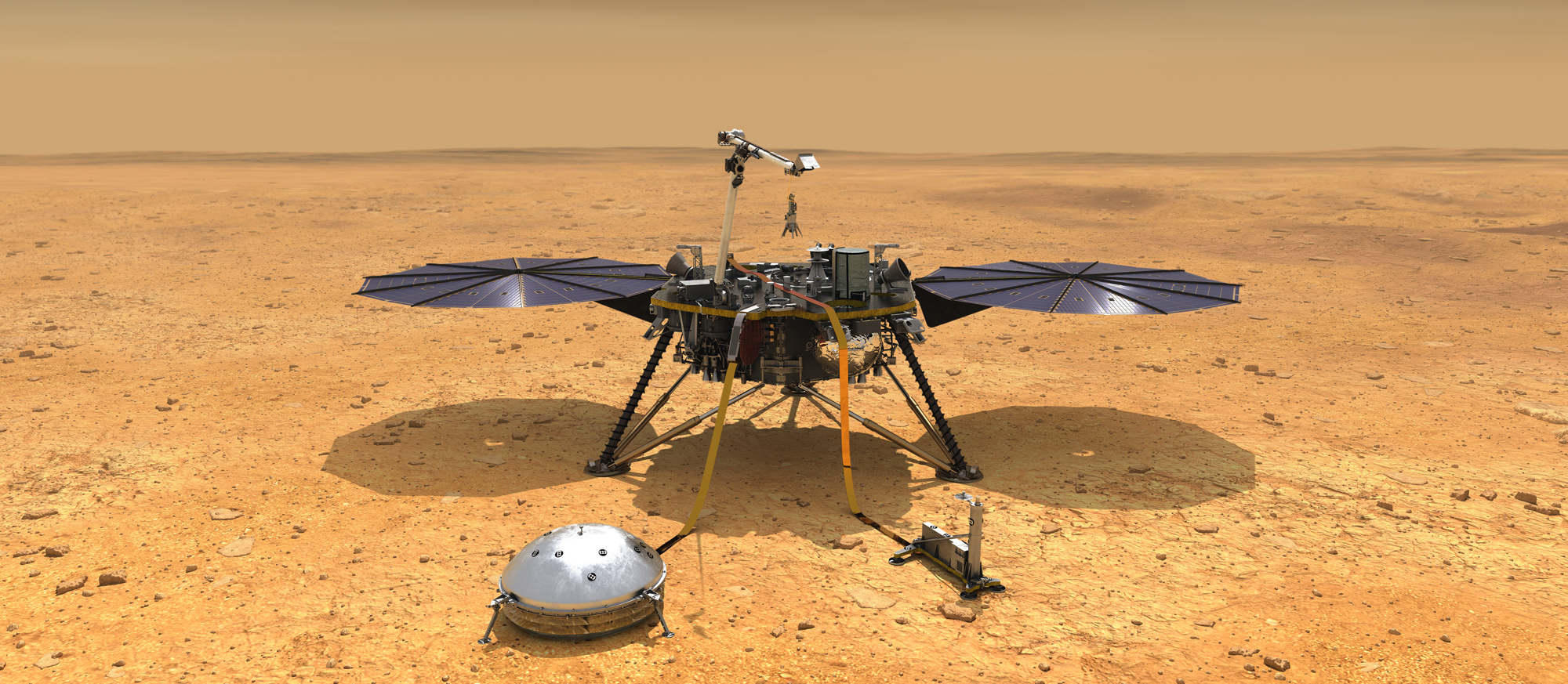Why NASA Chose a 'Vanilla Ice Cream' Landing Site on Mars for the InSight Lander
Sometimes, boring is best — and that's certainly true when you're trying to set a lander down on the surface of Mars, where any eventfulness is likely bad news.
That's why scientists carefully chose a flat, featureless expanse of the Red Planet called Elysium Planitia for NASA's InSight mission to touch down on to maximize the odds of everything going smoothly. The lander will arrive after a six-month cruise on Nov. 26.
"If Elysium Planitia were a salad, it would consist of romaine lettuce and kale — no dressing," Bruce Banerdt, NASA's principal investigator for the InSight mission, said in a statement. "If it were an ice cream, it would be vanilla." [Launch Photos: NASA's InSight Mars Lander Blasts Off on Atlas V Rocket]
Landing on Mars is challenging under the best of circumstances, requiring a carefully choreographed insertion into the atmosphere, a hefty heat shield and an extremely durable parachute. Then there's the matter of actually touching down, which is where flat terrain like that around Elysium Planitia becomes important, so that the spacecraft doesn't accidentally topple over or get caught in a crevasse.

Unlike the Opportunity and Curiosity rovers, InSight will be stuck in the same place for its entire stay on Mars — it doesn't have any way to move across the planet's surface. That means that it needs to be able to accomplish all its scientific research precisely where it lands.
In the case of the InSight lander, that science is focused on studying the interior of the planet rather than its surface. Among its instrument suite is a probe that buries itself 16 feet (5 meters) below the surface, which means the team needed to find a landing site with rock the probe could drill through.
"Picking a good landing site on Mars is a lot like picking a good home: It's all about location, location, location," Tom Hoffman, InSight project manager at NASA's Jet Propulsion Laboratory, said in the same statement. "And for the first time ever, the evaluation for a Mars landing site had to consider what lay below the surface of Mars."
Get the Space.com Newsletter
Breaking space news, the latest updates on rocket launches, skywatching events and more!
Out of 22 initial contenders, the team eventually narrowed it down to just Elysium Planitia, or rather, an oval 81 miles (130 kilometers) long and 17 miles (27 km) wide across that plain. And while it may not make for the most stunning postcard, the view doesn't matter to the InSight team nearly as much as the science does.
"If you were a Martian coming to explore Earth's interior like we are exploring Mars' interior, it wouldn't matter if you put down in the middle of Kansas or the beaches of Oahu," Banerdt said in the statement. "While I'm looking forward to those first images from the surface, I am even more eager to see the first data sets revealing what is happening deep below our landing pads. The beauty of this mission is happening below the surface. Elysium Planitia is perfect."
Email Meghan Bartels at mbartels@space.com or follow her @meghanbartels. Follow us @Spacedotcom and Facebook. Original article on Space.com.
Join our Space Forums to keep talking space on the latest missions, night sky and more! And if you have a news tip, correction or comment, let us know at: community@space.com.

Meghan is a senior writer at Space.com and has more than five years' experience as a science journalist based in New York City. She joined Space.com in July 2018, with previous writing published in outlets including Newsweek and Audubon. Meghan earned an MA in science journalism from New York University and a BA in classics from Georgetown University, and in her free time she enjoys reading and visiting museums. Follow her on Twitter at @meghanbartels.









